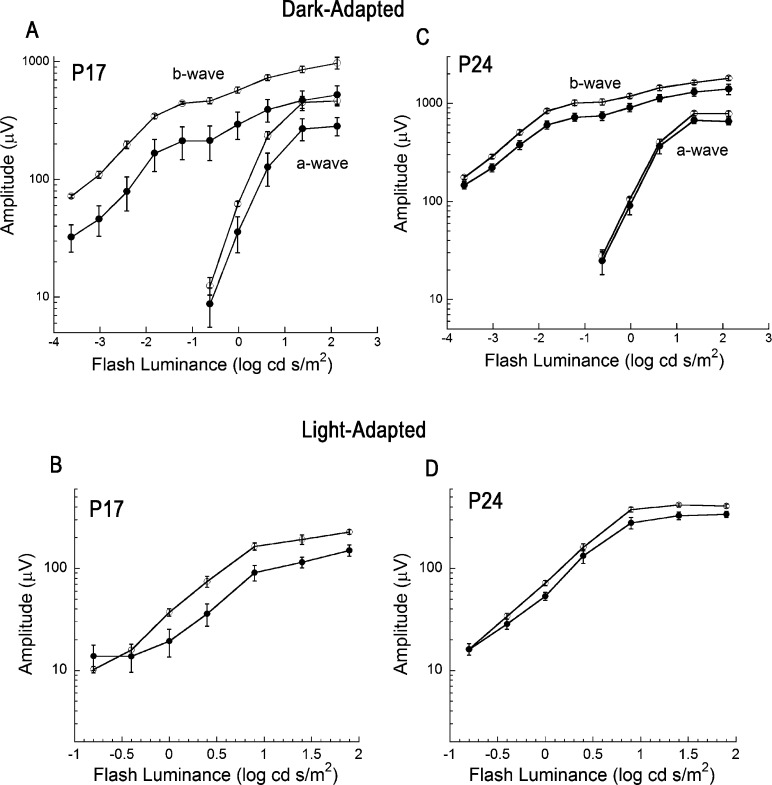Figure 4.
Electroretinogram recordings from LD and DD mice. Summary luminance-response functions obtained from LD (open circles) and DD (filled circles) mice obtained under dark-adapted (A, C) and light-adapted (B, D) stimulus conditions at P17 (A, B) and at P24 (C, D). At P17, the amplitudes of the a-wave (F1,7 = 10.6; P < 0.02), b-wave (F1,7 = 23.3; P < 0.01), and cone ERG (F1,7 = 16.1; P < 0.01) were significantly reduced in DD (n = 4) as compared to LD (n = 4) mice (A, B). At P24, there was no difference in a-wave amplitude (F1,12 = 2.4; NS) between DD (n = 5) and LD (n = 9) mice (C), but the b-wave was reduced, under both dark-adapted (F1,12 = 6.9; P < 0.05) and light-adapted (F1,12 = 6.8; P < 0.05) conditions (C, D). Data points indicate average ± SEM.

